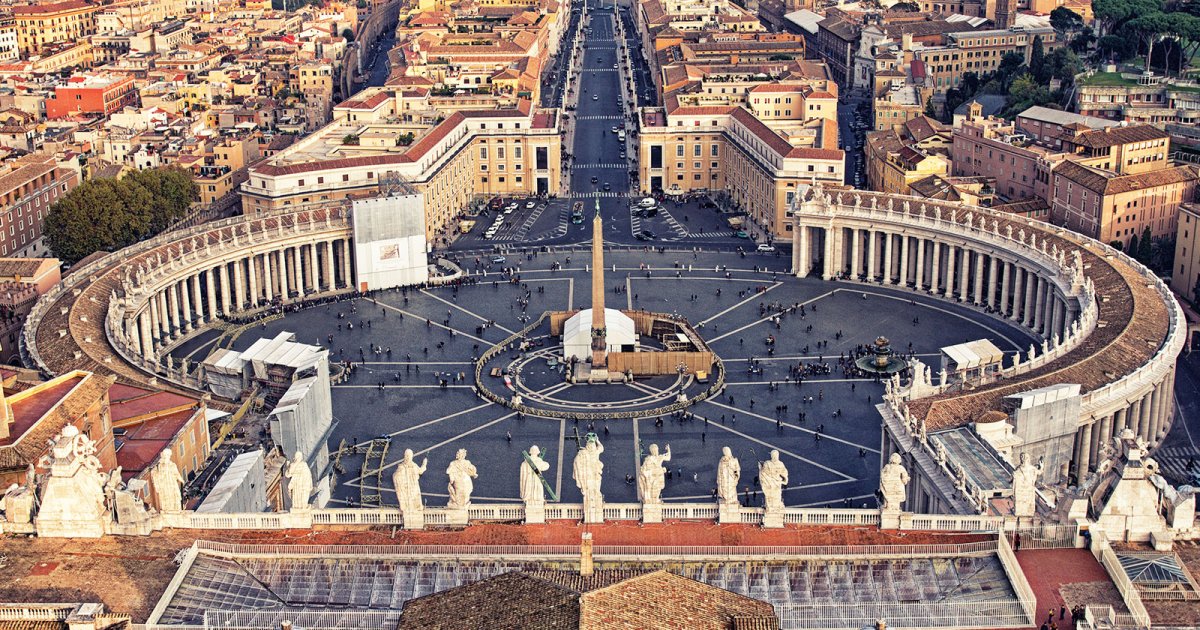SAINT PETER'S, Square
 Language: English / USA
Language: English / USA
Now walk towards the basilica through the immense but welcoming space of the square that Pope Alexander VII commissioned to Gian Lorenzo Bernini.
You should know that until the middle of the sixteenth century this area was a vast, unpaved space with the Egyptian obelisk in the center. Several designs had already been made for an octagonal or rectangular square, but not one architect or urban planner had come up with a solution that considered the tens of thousands of people that would come to the square for sacred celebrations.
In 1656 Pope Alexander VII entrusted the impressive task to the greatest architect of the time, Gian Lorenzo Bernini, who was then almost sixty years old. Most importantly, the sculptor-architect had to form the square in such a way that it was harmonious with the basilica's façade, which had been made relatively low and wide in order to let Michelangelo's grandiose dome stand out. Secondly, the new square had to connect the basilica to the pope's palace so that he could impart his blessing on the pilgrims.
Bernini designed a very wide oval space surrounded by a semicircle of colonnades which connect to the church through the two straight sides that form the churchyard. Look at the colossal colonnade and note how it opens up to virtually embrace the whole city, indeed, the entire community of the faithful, but also serves to protect the crowds gathering in front of the basilica from bad weather.
The oval spreads out around the two glittering Baroque fountains flanking the central obelisk. The imposing, massive, Doric-style columns topped by a continuous band symbolize the strength of the Church. The statues you see on the top of the colonnades depict all of the saints: an impressive 140!
The project also included adding a third arm that was never built, which would have left only the sides open and would have made entering the square even more spectacular. Besides, the twentieth-century opening of Via della Conciliazione compromised Bernini's layout, as he had imagined the square as a sacred place that was separated from the city.
FUN FACT: the obelisk of St. Peter's Square was raised here by Pope Sixtus V. The difficult operation was proving unsuccessful until a Ligurian navy commander suggested adding "water to the ropes"; when they finally wet the ropes that were used as tie-beams, they managed to pull the ultra-heavy monolith into a vertical position. The pope thanked him by granting Liguria the exclusive supply of palm and olive branches for Easter celebrations.



